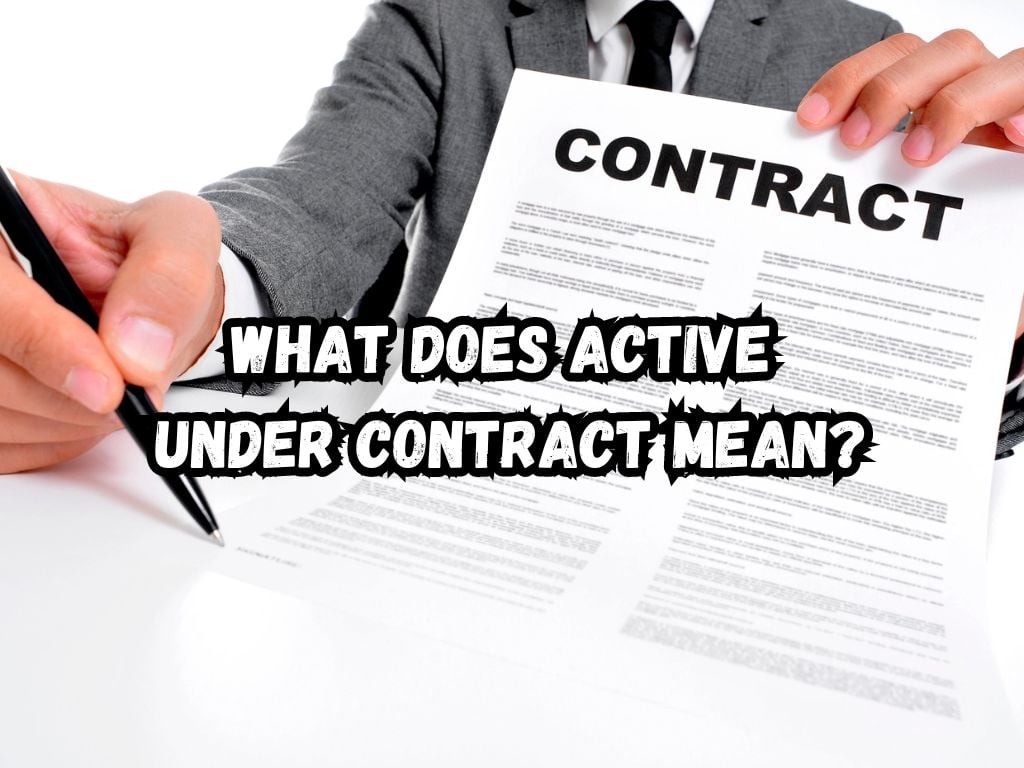

In the world of real estate, understanding the varied terms used in property listings can be quite a task for both buyers and sellers.
Table of Contents showAmong these terms, “Active Under Contract” often catches many by surprise, stirring curiosity and sometimes confusion.
This article aims to demystify what does active under contract mean, explaining what it means, how it differs from similar terms, and how it affects the parties involved in the transaction.
The term “Active Under Contract” is used to denote that a seller has accepted an offer on a property, but certain conditions—known as contingencies—need to be met before the sale can proceed to closure.
Although a contractual agreement has been made, these contingencies keep the agreement from being finalized.
This status is a signal that while the seller isn’t actively seeking more offers, the deal is not yet complete and could still experience changes.

Once an offer is accepted, the property is typically listed as “Active Under Contract.” This phase is vital as it initiates the process where both buyer and seller begin to work to meet the contingencies outlined in the contract.
Typical elements of the agreement during this phase include provisions for home inspections, appraisal, and the buyer securing financing.
Both parties agree that if these conditions are not fulfilled by the deadlines specified, the deal can still fall apart.
Understanding conditions and contingencies is crucial for both buyers and sellers. Common contingencies include the home inspection contingency, which allows the buyer to negotiate repairs or back out based on the inspection results.
There’s also the financing contingency, which ensures that the deal is dependent on the buyer securing a mortgage.
The appraisal condition ensures that the property needs to be appraised at or above the sale price to move forward. These are not just formalities but crucial steps that protect both parties from future discrepancies.
For sellers, the “Active Under Contract” status can be somewhat stable yet uncertain. They may choose to allow for showings, anticipating issues like financial fall-through from the buyer.
On the other hand, buyers must understand that while they can feel somewhat secure, the deal has several checkpoints that could influence the final outcome.
During the “Active Under Contract” phase, real estate agents play a pivotal role. For sellers, agents continue to manage the property with a careful balance — they must respect the current agreement while preparing for potential setbacks.
For buyers, agents navigate the contingency processes and keep track of deadlines to ensure their clients are protected and informed throughout.
Though a property is under contract, it does not fully close off opportunities for other interested buyers. Backup offers can be made and held in case the current deal falls through. This is beneficial for the seller as it provides alternatives should the current buyer fail to meet their contractual obligations.
It also keeps options open for buyers, offering a chance to secure a property that might still return to the market.

Normally, if all conditions are met satisfactorily, the property will transition from “Active Under Contract” to “Sold.”
This progression signifies the resolution of all contingencies, leading to the final signing of documents and the transfer of ownership.
This is the ultimate goal for both buyer and seller, representing the culmination of negotiations and meeting of minds.
Yes, buyers can still make an offer. These are considered backup offers and might come into play if the current deal falls through.
The duration varies based on the specified contingencies but typically ranges from a few weeks to a couple of months.
The most common include inspection, financing, and appraisal contingencies.
“Active Under Contract” often involves unresolved contingencies and possible continued showings, whereas “Pending” signals all contingencies have been met and the sale is more secure, awaiting only the closing.
“Active Under Contract” is a term that captures a critical moment in the real estate transaction process. It reflects a state of progress and conditional agreement.
When facing such circumstances, both parties should remain informed, attentive, and flexible. Understanding each step and requirement ensures a smoother transaction process and helps manage expectations realistically.
This detailed look into the ‘Active Under Contract’ status informs you of its importance and equips you with knowledge to effectively navigate this phase, whether you’re buying or selling.
More From The Stock Dork: